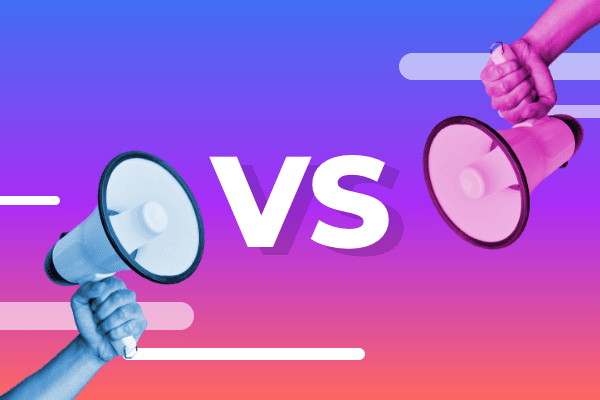Summary
Get your holiday paid search strategy ready for 2024. With shoppers starting early, planning is crucial. Use historical data to optimize budget allocation, focusing on key periods from September to January. Timing, product selection, keywords, and ads play vital roles in capturing consumer interest. Integrate paid search seamlessly with other marketing channels to maximize reach and engagement. Skai’s advanced tools can help enhance performance and streamline your campaigns.
The holidays are approaching, and paid search marketers around the country are putting the final touches on their shopping season media plans. Studies show that half of shoppers begin thinking about their holiday lists well before Black Friday and Cyber Monday, with many starting their shopping in October. According to Google, 59% of shoppers already know precisely what they’re looking for by December.
For digital marketers, the holidays are less of a season and more of a months-long decathlon, requiring careful planning and flawless execution to connect with shoppers from September through January. This is where paid search plays a pivotal role, seamlessly fitting into the omnichannel holiday media plan.
Paid search is a critical tool used throughout the customer journey. It helps build awareness, nurture consideration, and drive conversions as people research gifts. Often serving as the number one assist channel, paid search bridges the gap between discovery and purchase. Shoppers learn about products through TV, online video, and social media and then turn to search engines for more information. That’s why supporting your other programs with paid search is incredibly important.
As you refine and optimize your paid search strategy for the end-of-year holiday season, consider these key elements to ensure consistent engagement at every stage of the buyer’s journey during the year’s busiest shopping days.
Budget allocation
As you finalize your holiday paid search strategy, go back and learn from the performance of your previous holiday campaigns. Paid search is by far the most mature digital advertising channel, so you should have many years’ worth of what worked and what didn’t data to analyze high-converting keywords, ad groups, and campaigns.
What’s the starting point for figuring out how much budget you need for a paid search during the holidays? Budgets consistently grow year after year, so at this point, it’s more about figuring out where to spread that budget across your campaigns for your holiday media plan. Factor in any new variables, such as changes in consumer behavior or economic conditions that may have already impacted your program earlier this year.
Remember, during the holidays, shoppers spend more and convert at significantly higher rates. This heightened activity can boost your brand throughout the year. Therefore, it’s wise to prepare for increased budget demands due to higher search volumes and intensified competition.
Build into your budget plan a ramping-up period a few weeks before the peak shopping begins, as consumers will start researching for gift ideas on search engines before the shopping rush. This gradual increase allows time for algorithm adjustments and data collection, ensuring your campaigns are well-optimized when the holiday rush hits. Additionally, consider setting aside a portion of your budget for last-minute adjustments, as market conditions can shift rapidly during this period.
Timing is everything
Holiday marketing starts well before the decorations come out. More than half of consumers start shopping before November, with many beginning as early as September. For paid search marketers, rolling out holiday messaging 2-3 months in advance is crucial to boost brand awareness and capture early interest before the Cyber 5 shopping days (Thanksgiving, Black Friday, Cyber Saturday, Cyber Sunday, and Cyber Monday).
The strategic timing of your paid search campaigns is essential to the entire media plan. Paid search is a crucial driver across the customer journey, supporting other channels by catching consumers at various touchpoints and converting their interest into action. As you plan your schedule, map out not only when to start advertising but also when to intensify efforts and conserve budget for peak periods. This involves creating a detailed timeline for each phase of your paid search campaign:
- Early Phase (September-October): Make sure your paid search plan includes building awareness and capturing early interest. Plan to use broader keywords and top-of-funnel strategies to attract a wide audience. Highlight general holiday themes and promotions to generate interest. Include provisions in your plan to start these campaigns in September.
- Mid Phase (November): You will likely want to ensure your competitive keyword campaigns are at full blast. Plan to ramp up your budget and start pushing holiday-specific promotions. Target more competitive keywords and adjust bids to stay ahead of competitors. Include budget allocations and increased spending strategies in your plan to begin in early November.
- Peak Phase (Cyber 5 and December): Plan to go all out with aggressive bidding strategies and high-budget campaigns. Ensure your ads are highly relevant and optimized for conversions. Use precise targeting to capture last-minute shoppers. In your overall strategy, schedule these high-intensity campaigns to start in late November and run through December.
- Post-Holiday Phase (January): Don’t overlook the post-holiday shoppers. Many consumers continue to shop after the holidays, looking for deals and using gift cards. Adjust your campaigns to capture this continued interest. Ensure your plan includes post-holiday campaign strategies starting immediately after Christmas and continuing into January.
By carefully planning and timing your paid search efforts now, you can ensure that your campaigns are synchronized with your broader marketing strategy, maximizing engagement and conversions throughout the holiday season.
Which products to promote?
Holiday shoppers often focus on different products and services than at other times of the year. Leveraging insights from the recent Amazon Prime Day event can provide valuable indicators of what consumers may be interested in the upcoming holiday season. Instead of relying solely on your everyday products, look for holiday-specific ways to present your offerings that resonate with your target audience.
To identify which products to promote, analyze data from your Google Best Sellers report and Prime Day insights. These reports provide valuable information on top-performing products. Use these trends to understand what has been successful and consider how these products can be adapted to fit into your seasonal marketing plans. Additionally, reach out to your colleagues in the retail media and social advertising teams to see which products they plan to focus on in their holiday programs. Their insights can help you make more informed decisions about which products to spotlight during the holidays.
It’s crucial to align your product selection with holiday shopping trends and consumer demand. Consider promoting your brand’s most popular gift choices, seasonal products, or limited-time holiday editions. By thoughtfully selecting and promoting products that align with holiday demand, you can maximize your campaign’s effectiveness and drive significant sales during this critical period.
Keywords and Ads
As consumers turn to search engines for gift ideas, deals, and other holiday inspiration, keyword research and effective ad messaging become crucial components of your paid search strategy. It’s essential to start planning your keyword and ad strategy well in advance to ensure your ads reach the right audience at the right time.
Analyze last year’s performance and current trends leading up to Q4 to understand which keywords were most effective. Use this historical data to guide your keyword selection and ad messaging for the upcoming holiday season.
When planning your keyword and ad strategy, consider the following steps:
- Identify High-Value Keywords: Focus on keywords likely to drive high traffic and conversions during the holiday season. Include holiday-specific keywords and phrases such as “gift ideas,” “holiday deals,” and “Christmas sales.” Leverage tools like Google Keyword Planner to find relevant and trending keywords.
- Tailor Your Ads: Ensure your ad copy aligns with your selected keywords and resonates with holiday shoppers. Use compelling, holiday-themed messaging highlighting special offers, discounts, and unique selling points of your products. Incorporate urgency and exclusivity to encourage clicks and conversions.
- Create Ad Variations: Develop multiple ad variations to test messages and see which performs best. A/B testing your ad copy allows you to optimize your messaging based on real-time performance data, ensuring you deliver the most effective ads.
- Monitor and Adjust: Monitor your keyword performance and ad effectiveness throughout the holiday season. Based on performance metrics, be ready to make adjustments to maximize your reach and engagement.
By carefully planning your keyword strategy and crafting tailored ads, you can ensure that your paid search campaigns effectively capture the attention of holiday shoppers and drive significant sales during this critical period.
Omnichannel integration
Paid search is only one part of a full-funnel holiday marketing strategy. To maximize your impact, you must reach customers at every stage of their journey across various channels, including search, social, and retail media. This integrated approach ensures your brand remains visible and engaging throughout the holidays and beyond.
As you plan your holiday campaigns, consider the following steps to ensure your paid search efforts complement and enhance your other marketing channels:
Unified messaging. Ensure your messaging is consistent across all channels. Your paid search ads should align with the themes and promotions in your social media and retail media campaigns. This consistency helps reinforce your brand message and makes it more memorable for consumers.
Cross-channel targeting. Use data from your social media and retail media campaigns to inform your paid search strategy. For example, if certain products or promotions perform well on social media, consider incorporating related keywords and ad copy into your paid search campaigns. This cross-channel targeting ensures you’re capitalizing on proven interests and behaviors.
Remarketing strategies. Develop remarketing campaigns that target users who have interacted with your brand on other platforms. If someone engages with your social media post or clicks on a retail media ad but doesn’t convert, use paid search ads to re-engage them with personalized messages and offers. This multi-touch approach increases the likelihood of conversion by keeping your brand top-of-mind.
Coordinated campaigns. Plan your campaign schedules to support each other. For instance, if you’re running a significant promotion on social media on a certain date, make sure your paid search ads highlight the same promotion. Coordinating your efforts across channels amplifies your reach and reinforces your campaign message.
How Skai can help
Skai is here to supercharge your holiday paid search campaigns with advanced tools and features designed to optimize your efforts and deliver stellar results. Our platform offers comprehensive solutions to enhance every aspect of your strategy, ensuring you capture the attention of holiday shoppers and outshine the competition.
Search Term Analysis uses AI to simplify and streamline keyword management, uncovering inefficiencies faster so you can dominate the holiday search results.
Budget Navigator employs AI to automate budget pacing per custom constraints, finding the sweet spot between ROI and spending, ensuring your holiday campaigns have the right amount of festive fuel.
Signal Enhancement enhances performance by optimizing the data that matters most to your business, helping you shine bright in the crowded holiday marketplace.
Experiments enable you to set up and run pre/post tests at scale, providing conclusive results faster so you can quickly pivot and keep your holiday campaigns on the nice list.
Pacing Monitor ensures your campaigns stay on track by monitoring budget pacing and performance in real time, which is especially crucial when the holiday traffic heats up.
Dimensions provide detailed AI-driven insights into performance across various segments, allowing you to craft holiday campaigns that hit all the right notes and inform better decision-making.
Automation uses AI to streamline repetitive tasks and optimize campaigns with rule-based automation, freeing up your time to strategize and sip on some holiday eggnog.
Dayparting optimizes ad scheduling to ensure your ads are shown at the most practical times, maximizing engagement when holiday shoppers are most active.
Cross-channel integration integrates your search campaigns seamlessly with social, retail, and other digital channels for a cohesive holiday marketing strategy that dazzles across the board.
Customizable dashboards create tailored dashboards to monitor KPIs and track performance in real-time, giving you the insights needed to keep your holiday campaigns merry and bright.
By leveraging Skai’s powerful capabilities, you can refine your paid search strategies and ensure your holiday campaigns achieve remarkable success. Skai provides the tools and insights needed to stay ahead of the competition, maximize your impact, and turn your holiday marketing efforts into a festive triumph. So, gear up and watch your holiday paid search campaigns sleigh the season!
Conclusion
As the holiday season approaches, the importance of a well-crafted paid search strategy cannot be overstated. A strong plan during this critical time can significantly impact your overall performance. The stakes are high, with increased competition and shifting consumer behaviors adding complexity to the equation. However, with careful planning and execution, your efforts in paid search can drive impressive results.
Paid search plays a crucial role in the holiday marketing mix, seamlessly fitting into the broader omnichannel strategy. It helps build brand awareness, nurtures consideration, and drives conversions as shoppers seek information and deals online. The ability to target users at various stages of their journey—from discovery to purchase—makes paid search an indispensable tool for digital marketers during this peak shopping season.
A successful holiday paid search campaign requires meticulous planning and optimization. Analyzing past performance, allocating budgets wisely, and timing your efforts effectively are all essential components. Understanding and leveraging unique holiday shopping trends and behaviors can also provide a significant advantage. The dynamic nature of the holiday market demands agility and readiness to make real-time adjustments based on performance data.
While there are many variables to consider—from budget allocation and keyword selection to omnichannel integration and timing—the effort invested in creating a robust paid search strategy will pay off. As you finalize your plans, remember that a well-executed campaign can boost your holiday sales, strengthen your brand’s presence, and set the stage for continued success into the new year. By prioritizing paid search and integrating it seamlessly into your holiday marketing efforts, you can ensure that your brand stays top-of-mind for shoppers and achieves remarkable results during this critical period.
Skai’s Paid Search solution for the holiday season and beyond
Skai’s Paid Search solution helps you stay ahead of your competition and reach consumers when and where they’re searching. Our advanced optimization and reporting are coupled with automated solutions, including tools for bidding and budgeting, and much more. As part of our omnichannel platform, connect the walled gardens and manage campaigns on all the top publishers across retail media, paid social, and app marketing.
We welcome you to schedule a brief demo with our team to see our cutting-edge paid search innovation firsthand.







